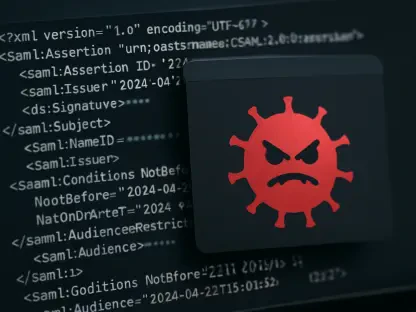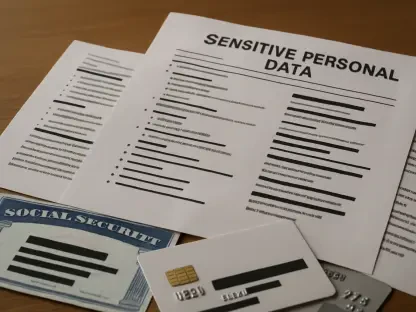As we close out 2024, it’s clear that this year has been a landmark one for data breaches, with over 1 billion records stolen in various incidents. These breaches have underscored the growing sophistication of cybercriminals and highlighted the vulnerabilities across multiple sectors, from telecommunications to healthcare. This article delves into the most significant breaches of 2024, examining the scale, impact, and lessons learned.
AT&T’s Data Breaches
July Breach: Metadata Exposure
In July, AT&T suffered a severe data breach where cybercriminals accessed phone numbers and call records for nearly all of its 110 million customers. This breach was traced back to a compromised account with data giant Snowflake, rather than a direct attack on AT&T’s systems. Though the stolen data did not include the content of calls or text messages, the exposed metadata posed significant risks, especially to individuals in sensitive positions, such as domestic abuse survivors. This metadata could reveal patterns of communication that could be exploited, adding a layer of threat to those already in precarious situations.
Reports surfaced that AT&T may have paid a ransom to prevent the public release of the stolen data. The dilemma of whether to negotiate with cybercriminals has become increasingly contentious, as paying ransoms can set a dangerous precedent while not paying may result in severe consequences for affected individuals. The breach prompted heightened scrutiny of AT&T’s cybersecurity measures and their ability to protect customer data. This incident underscores the importance of robust security protocols and the need for continual vigilance to safeguard sensitive information.
March Breach: Personal Information Compromised
Earlier in March, yet another grave incident struck AT&T as a data breach broker published a cache of 73 million customer records on a cybercrime forum. This breach involved personal information such as names, phone numbers, and postal addresses. Most worryingly, the breach also exposed encrypted passcodes used to access AT&T accounts. While encrypted, these passcodes could be easily unscrambled, posing a significant risk to 7.6 million accounts. This breach highlighted the need for strong encryption and more secure storage methods to protect sensitive information effectively.
In response to this breach, AT&T took immediate action by resetting customer passcodes. However, the telecom giant remained uncertain about the exact origins of the leak or how the data was initially compromised. This incident raised critical questions about the adequacy of current cybersecurity measures and prompted discussions about how companies should handle and protect customer data. The breach emphasized that even well-established companies like AT&T are not immune to cyber threats, making it essential for constant improvement in forensic capabilities to understand and mitigate future breaches.
Healthcare Sector Under Siege
Change Healthcare Ransomware Attack
Two years after UnitedHealth Group completed its acquisition of Change Healthcare, the company became the victim of a ransomware attack. Cybercriminals capitalized on the lack of multi-factor authentication on one of the company’s critical systems, leading to a significant compromise of sensitive data. The ransomware attack resulted in several weeks of downtime, severely disrupting operations at hospitals, pharmacies, and healthcare practices across the United States. The breach underscored the critical importance of implementing strong, multi-layered security measures to protect sensitive health information.
UnitedHealth disclosed that the stolen data included personal, medical, and billing information. While the exact number of affected individuals remains unspecified, the company suggested that the breach potentially impacted around one-third of the U.S. population. Given the scale of the breach, it likely affects hundreds of millions of people. This incident has brought to light the vulnerabilities in the healthcare sector and the dire consequences of neglecting comprehensive cybersecurity practices. It serves as a wake-up call for the industry to prioritize data protection and invest in robust security measures.
Synnovis Ransomware Attack
In June, a ransomware attack targeted Synnovis, a pathology lab that services numerous hospitals and health facilities across London. The breach resulted in a significant disruption in medical services, causing the postponement of thousands of operations and procedures. The attack involved the theft of data from approximately 300 million patient interactions, spanning several years. A Russia-based ransomware gang was held responsible and demanded a $50 million ransom, which Synnovis refused to pay. This decision left the U.K. government bracing for the possible publication of the stolen health records online.
The Synnovis ransomware attack exposed significant shortcomings in data security standards within one of the NHS trusts. The fallout from this breach highlighted the necessity for public health institutions to meet stringent data security requirements to safeguard sensitive patient information. This incident has made it clear that the healthcare sector remains an attractive target for cybercriminals due to the valuable data it holds. The breaches call for a coordinated effort to enhance cybersecurity measures, ensure data protection, and mitigate potential risks to patient privacy and healthcare services.
Breaches in the Cloud
Snowflake Breach
Cloud data giant Snowflake experienced a significant breach when cybercriminals exploited stolen credentials to access hundreds of millions of customer records from several large companies. Among the affected organizations were Ticketmaster, Advance Auto Parts, TEG, Neiman Marcus, Santander Bank, and the Los Angeles Unified School District. Approximately 165 Snowflake customers had their data compromised, highlighting a critical vulnerability: Snowflake’s lack of enforced security features to guard against password-reliant intrusions. This incident underscored the necessity for robust authentication measures and continuous monitoring of access privileges in cloud environments.
The breach revealed that cybercriminals had used stolen credentials from data engineers with access to Snowflake environments, allowing them to infiltrate multiple companies. This alarming breach sheds light on the systemic weaknesses in data protection measures across cloud services and emphasizes the importance of adopting advanced cybersecurity protocols. Organizations relying on cloud services must ensure that their providers enforce stringent security standards to protect sensitive data effectively. The Snowflake breach serves as a cautionary tale of the potential risks associated with cloud computing and the need for improved security measures to prevent similar incidents.
Notable Sector-Specific Breaches
Cencora: Pharmaceutical Data Leak
In February, U.S. pharmaceutical giant Cencora experienced a data breach that compromised patient health data. The company has not disclosed the total number of individuals affected, but reports indicate that over a million people have been notified about the incident. This breach highlights the need for more stringent data security measures within the pharmaceutical industry, given the sensitive nature of the information involved. The incident serves as a reminder of the critical importance of protecting patient data and the severe consequences of failing to do so.
The breach at Cencora underscores the vulnerability of the pharmaceutical sector to cyberattacks. Given the potentially life-altering nature of the information held by pharmaceutical companies, the industry must prioritize investing in advanced cybersecurity measures. This incident has prompted discussions on the need for more comprehensive data protection regulations and the enforcement of stringent security standards to safeguard patient information. The Cencora breach is a stark reminder that the pharmaceutical industry must remain vigilant and proactive in its efforts to protect critical data from cyber threats.
MediSecure: Australian Healthcare Compromised
A ransomware attack on Australian prescriptions provider MediSecure resulted in the theft of personal and health data of nearly 13 million people, or roughly half of the country’s population. The significant scope of this breach led to MediSecure subsequently declaring insolvency. This incident illustrates the severe financial repercussions that data breaches can have on companies, highlighting the importance of robust cybersecurity measures to protect sensitive information and maintain business continuity.
The MediSecure breach underscores the vulnerability of the healthcare sector to cyber threats and the devastating impact such incidents can have on both organizations and individuals. The breach has prompted calls for stricter regulations and more significant investment in cybersecurity to protect sensitive health data. MediSecure’s insolvency serves as a cautionary tale for other healthcare providers, emphasizing the necessity of comprehensive data protection measures and the potential financial consequences of failing to secure sensitive information against cyberattacks.
Data Sharing Disclosures
Kaiser: Unintended Data Sharing with Advertisers
U.S. health insurance giant Kaiser inadvertently shared the private health information of 13.4 million patients with advertisers. This incident came on the heels of similar disclosures by telehealth startups Cerebral, Monument, and Tempest, revealing a broader issue of inadequate data handling practices in the health sector. The unintentional sharing of sensitive health data with third parties raised significant concerns about patient privacy and the ethical implications of such practices.
The broader issues revealed by these incidents point to systemic weaknesses in the health sector’s data handling practices. The inadvertent sharing of sensitive health information with advertisers highlights the need for stricter regulations and better oversight to ensure the protection of patient data. These incidents have prompted discussions about the ethical implications of data sharing practices and the necessity for transparent policies that prioritize patient privacy. The Kaiser breach serves as a critical reminder of the importance of robust data protection measures and ethical considerations in handling sensitive health information.
USPS: Postal Data Shared with Advertisers
The U.S. Postal Service was found to be sharing logged-in users’ postal addresses with advertisers like Meta, LinkedIn, and Snap. USPS ceased the practice after being notified but did not disclose the number of individuals affected, raising concerns about transparency and user privacy. This incident highlights the broader issue of data sharing practices by public institutions and the need for greater accountability and oversight to protect user information.
The revelation that USPS was sharing postal data with advertisers underscores the necessity for public institutions to adhere to stringent data protection standards. The lack of transparency regarding the number of individuals affected has further fueled concerns about accountability and the ethical implications of such practices. This incident has prompted calls for more stringent regulations and oversight to ensure that public institutions prioritize user privacy and data security. The USPS breach serves as a reminder of the importance of transparency and accountability in handling user data, particularly by public entities.
Financial Sector Breaches
Evolve Bank Breach
A ransomware attack on Evolve Bank compromised the personal data of over 7.6 million people. Many of these individuals had never interacted directly with the bank, as Evolve serves numerous fintech companies and startups. This breach highlights the interconnectedness of financial services and the far-reaching impact of such attacks. The incident underscores the importance of robust cybersecurity measures to protect sensitive information and ensure the integrity of financial services.
The Evolve Bank breach sheds light on the complex network of relationships between financial institutions and fintech companies. The far-reaching impact of the breach illustrates the potential consequences of cyberattacks on interconnected financial services. This incident has prompted calls for greater collaboration between financial institutions and fintech companies to enhance cybersecurity measures and protect sensitive data effectively. The Evolve Bank breach serves as a stark reminder of the importance of comprehensive data protection strategies in the financial sector.
National Public Data Catastrophic Breach
As we wrap up 2024, it’s evident that this year has marked an alarming peak in data breaches, with over 1 billion records being stolen in several high-profile incidents. These breaches have revealed the increasing sophistication of cybercriminals, who have managed to exploit the weaknesses in various sectors ranging from telecommunications to healthcare. The surge in cybersecurity threats has not only exposed the growing vulnerabilities within these industries but has also prompted urgent calls for stronger data protection measures. This article takes a closer look at the most significant data breaches of 2024, providing an in-depth examination of their scale, the far-reaching impacts on individuals and organizations alike, and the crucial lessons we can glean from these incidents. By analyzing these breaches, we aim to understand better how such large-scale data thefts occurred and how they can be prevented in the future. The insights drawn from these events are vital for enhancing our cybersecurity protocols and safeguarding sensitive information.









